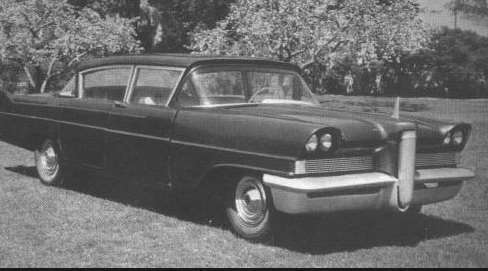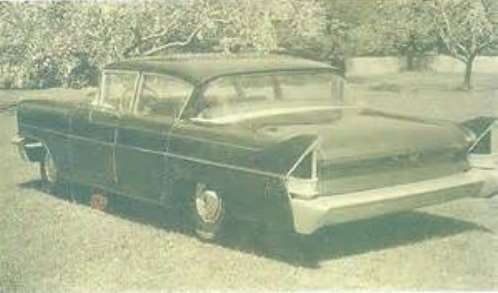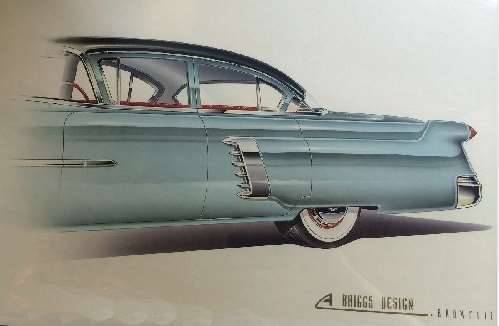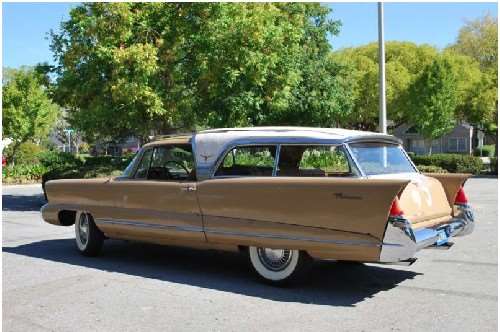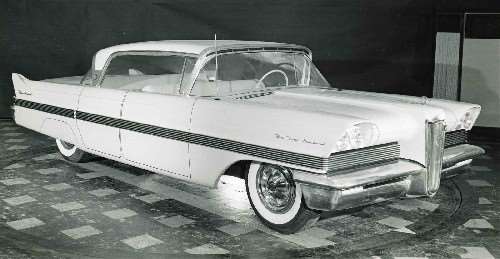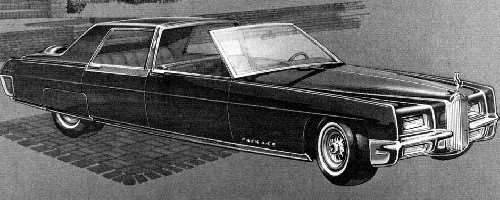|
Re: Ex-Packard Designers
|
||||
|---|---|---|---|---|
|
Home away from home

|
Quote:
Yes, but before we start patting Bill Brownlie on the back over the greenhouse and beltline indentation on the final versions of the proposed 1957 Detroit-built Packard designs it is important to know how this stuff works. ? Most production automobiles are designed with engineering "hard points" already set in place... prior to designers sitting down and putting pen to paper. For instance, the greenhouse size, shape, dimensions of the glass, etc. Even what may seem to be a design/styling feature like the beltline indentation with the rear upsweep MAY be the result of an engineering hard point. For instance to increase body rigidity or reduce "drumming" in sheet metal panels. So we really don't know how, why or where this feature originated...Richard Teague, Bill Schmidt, Bill Brownlie, or an engineer someplace. ? We do not know when these illustrations were actually made...before, after or during the time when the indent and greenhouse may already have been suggested or even set as hard points. Thus, even if the issues of the greenhouse and beltline indentation were purely for styling (and they probably were not) there is no way-especially at this late date and not knowing more details-to determine precisely who or what influenced who or what. ? Finally, I happen to know personally that Bill Brownlie was not at all fond of "doglegs" created by reverse-sweep, wrap-around windshields (which the illustrations in question so obviously have). Bill told me this very thing when I interviewed him in the 1970s for a story on Dave Scott's (NOT Virgil Exner's) Plymouth Plainsman. The first thing that came out is that he and others at Chrysler resented the original reverse-sweep wrap-around shape of the Plainsman windshield-which was just like the proposed 1957 Packard and like the Packard Panther, etc.etc.etc. So? They tampered with poor Dave's design and the net result was a hideous, huge vertical vent window installed on the actual car built at Ghia. Just ruined a perfectly harmonious design and made it look fat rather than sleek by changing the locus of the eye to the vertical. The entire design perspective was changed just from tampering with the windshield. So why would Bill be promoting design that he claimed he disliked? Unless it was already set as a hard point! Anyway, offered for what it is worth...
Posted on: 2014/8/3 13:06
|
|||
|
||||
|
Re: Ex-Packard Designers
|
||||
|---|---|---|---|---|
|
Home away from home

|
For years I thought that I liked the Plymouth Plainsman (except for the cowhide fur upholstery), but seeing it with older eyes, the thing looks squat and fat and utterly lacks the charm or innovation I had credited it with. The roll down tailgate window feature was from the future, but Leeedy's comments on doglegs and difficult entry points make me think that I would never want it as a servicable car. Imagine the pain of kids riding backwards in a third seat while parents try to talk to them. Or the difficulty of extracting grown people gracefully over a tailgate. The things we have learned the hard way.
On the other hand, the middle picture of Packard's 57 Black Bess makes me think this might be George Mason's ghostly revenge for not combining Packard into his dream of an AMC merger. From that rear quarter view, it is hard to miss the influence of a 1960 Rambler sedan. Talk about shared body panels and substructures! Packard designers must have considered this the love letter to win back George Romney. The influence of the Predictor is there, but what showed up is something far more Nash-like.
Posted on: 2014/8/3 14:39
|
|||
|
||||
|
Re: Ex-Packard Designers
|
||||
|---|---|---|---|---|
|
Home away from home

|
Quote:
Hello Dave... I actually rode in the Plansman a couple of times... and I found this car when it was claimed lost to the car world for many years. Sitting in the rear seat was not much different than sitting in the rear seat of a 1955-57 two-door Chevy Nomad or Pontiac Safari wagon. In fact, the Plainsman was better! Why? Because it had far more headroom. AND the cool flow-thru ventilation (WHICH Ford was crowing about in 1964 as if they invented it)! Plainsman was also WAY ahead with a lot of other features: ? Reverse-facing 3rd-row rear seat. As for talking to kids riding backwards in this seat... it never seemed to be a problem for the thousands upon thousands of GM, Ford and Chrysler cars that had it in production! Our 1961 Oldsmobile had it (by the way with body built by Ionia division of Mitchell-Bentley who did 1953-54 Caribbeans). Our 1963 Chevy Impala had it. We never had any problems and frankly, the kids loved it! Only our seat and almost all other production 3rd-row seats until very recent years were not power retractable. Again... a very way ahead feature. ? POWER retractable rear seat ? Power retractable assist step plates. THESE didn't happen on production cars until years and years later and they weren't retractable! And nobody had to climb over the tail gate... for this very reason... just like on production cars that followed decades later. As the dealers used to say, entering a station wagon with rear-facing 3rd row seat and step plates was "a 2-step operation": step up on the step plate...step into the seat well. Done. The tailgate was never in the equation. ? Hidden spare stowed in the rear quarter. Now, come on... how many wagons and SUVs copied this feature even decades later?! ? Power rear tail gate (again...?) ? Power retractable tailgate backlite window (again..?) ? Built-in hinged skirts (okay GM Le Sabre had this feature first, but they yanked it off of the so-called "update" version-which is what people see today and think it is how the car looked-and then GM cut the rear wheels open in the body later. Gad!). ? Power retractable left tail light assembly with hidden gas filler (by the way, this feature was also planned to be on Packard Predictor... until Chrysler slapped a patent on it and Predictor-at the last minute-ended up leaving the filler in...the trunk!!!!). Come on... give it up for this feature huh? You KNOW it's cool! As I said previously, the "fat, stubby" look of the Plainsman came about as a direct result of Chrysler meddling with Dave Scott's beautiful original design. Dave's design had a sweeping reverse-angle wrap-around windshield... exactly (and I do mean exactly) like Black Bess and the planned 1957 Packards. See the forward slanted line of the roof section that leads right into the parting line at the rear of the door? That same line and angle was originally on the Plainsman windshield A-pillar design. And it made the car look very sleek. So IF you would not like the dogleg on the Plainsman, you would not have liked it on the 1957 Packards and Clippers either... because it was the same design. Likewise on the 1954 Panther for that matter. Same thing. You can see how it was intended to look if you read the original history of this car written by Leon Dixon back in the 1970s for Hemmings Special-Interest Autos magazine. Today's auction companies want to convince you that somehow Virgil Exner did all this. The auction folk are either unaware of the correct history or purposely choose to ignore it and make up their own. Either way this history published in Hemmings Special-Interest Autos magazine was the real, true story of the Plainsman and how it came to be. AND it was the first time that Dave Scott rather than Virgil Exner was credited with doing this design-in total (except for the ridiculous vent window and mangled windshield). You can find more Dave Scott designs featured on other cars and even in Esquire magazine (where some thought his work was that of Count Alexis de Sakhnoffsky). Anyway, once Chrysler turned this beautiful design by one into a design by committee and they mangled it with the huge ungainly vent window, it gave the illusion of changing the proportions of the car completely. Brownlie and others at Chrysler though this kind of wrap-around windshield "looked too GM" (they apparently never noticed it on Packard Panther). Instead of having a swept-forward streamlined look, the eye now sees a giant vertical vent window that wrecks the theme and goes with nothing on the car. No wonder it now looks odd to some. As for Packard influence on AMC cars of following years... yesss... but that was unavoidable with one Richard Teague steering the design ship over at that company. AND if you are really observant on AMC sedans, you will note that they used identical ribbed aluminum extrusions around some of the greenhouse glass (like the doors) after Packard's demise. Just like it was used on the 1957 Detroit-built Packard designs that never made production. Look at them closely. These little extrusions are even on Black Bess aound the door glass... just like later AMC cars. Kinda makes ya go... HHhhhhmmmmmm!
Posted on: 2014/8/3 16:08
|
|||
|
||||
|
Re: Ex-Packard Designers
|
||||
|---|---|---|---|---|
|
Home away from home

|
hee hee... I didn't necessarily mean that as a pat on Brownlee's back - rather it is just an observation. I have no idea who was the first to come up with the overall shape of that roofline, so I'm not suggesting that it was Brownlee.
 Be all of that as it may, the Brownlee roofline is obviously intended to drop lower than the planned Patrician roofline. Nevertheless, the overall shape of the two is remarkably similar. To my eye, the Brownlee designs look more GM than they look Packard. Of the planned '57 Packards, the Patrician is my least favorite principally because of that roofline. On the other hand, I think the Four Hundred four door hardtop would have been sensational. What was in the back of my mind - but I didn't write it in my comment - that I find it remarkable how design similarities happen across the spectrum of automotive design at any given time. The "dogleg" and the compound convex windshield was a hot thing in the mid-'50s. I wonder how much "looking over the shoulder" goes on among designers. I am also aware that some design elements are driven by engineering for the very reasons you point out. You and I are almost neighbors! I live in Dixon... 
Posted on: 2014/8/3 16:14
|
|||
|
||||
|
Re: Ex-Packard Designers
|
||||
|---|---|---|---|---|
|
Home away from home

|
Ahhh... but Brownlie's illustration does not depict a lower roof. Only the illusion of one. Again, that would have been an engineering hard point. If you look closely at Brownlie's illustration with you notice it merely has a smaller (shorter) rear backlite window. The difference from Black Bess is that Brownlie's design adds a heavy wide band of ripply chrome at the top edge of the rear window. All Black Bess does is move the quarter window forward, delete the wide ripply band of chrome and raise the height of the backlite rear glass. It does not change the height of the roofline at all. Just a common design illusion. I am certain the dimensions with the exception of the glass height at the rear were the same.
And yessss, I know right where Dixon is... couple more exits up the freeway-if one is headed toward San Francisco. RE: the wrap-around windshield and dogleg created by the reverse-angle A-pillar, read my comments about how the Plainsman also originally had this feature.
Posted on: 2014/8/3 16:38
|
|||
|
||||
|
Re: Ex-Packard Designers
|
||||
|---|---|---|---|---|
|
Home away from home

|
"Ahhh... but Brownlie's illustration does not depict a lower roof. Only the illusion of one."
Fooled me!  Agreed that vent wing on the Plainsman ruined it! Now here's one for everyone who has mentioned the Plainsman - note how the rear portion of the roof on the Plainsman resembles the would-have-been roof on the '57 Four Hundred hardtop - but flipped around. On the subject of how design ideas migrate - I've long had a theory that Nance took that Packard Four Hundred roof line with him to Lincoln-Mercury. Consider the roof on the '58-'60 Lincolns and the roof on the '63-'66 Mercurys, even though Nance was long gone from Ford Motor Company when those Mercurys went into production.
Posted on: 2014/8/3 16:52
|
|||
|
||||
|
Re: Ex-Packard Designers
|
||||
|---|---|---|---|---|
|
Home away from home

|
As a father of five (now grown) children, I owe some of my surviving sanity to a series of Volvo 240 and full-sized GM station wagons with rear facing seats (thank you Plymouth Plainsman). These same children now have to face a world of Minivans and SUVs where they can see and hear every action of their fewer numbers of children. When we were younger parents, our family vacations of several thousand miles in two weeks would have driven us crazy (or apart) had it not been for our kids watching the highways slip away. The vehicles we did choose were easy to get in and out of, so thanks to engineers and designers who kept things reasonable when it came to active families and now, old folks.
When my 92 year old father-in-law first rode in my Packard hardtop, he remarked about how easy it was to access and move around in. My wife, used to a bunch of modern and very safe vehicles, and a dislike for most of my Corvettes, remarked on the Packard's visibility and open feeling. It remains the only one of my old cars that she wants to take a Sunday drive in. So, something was going right in those EGB studios sixty years ago. Even the grandkids like riding in the Packard, especially when it makes those "dinosaur noises" in the T-L suspension. Mine won't push them back into their seats like the Corvettes do, but it remains one of the few that can hold most of the gang and everyone can see out of (when they're not teasing each other). I wonder if that was in the engineering and stylists hard points?
Posted on: 2014/8/4 8:33
|
|||
|
||||
|
Re: Ex-Packard Designers
|
||||
|---|---|---|---|---|
|
Home away from home

|
Quote:
Hello. Yes, Dave Scott's Plainsman roof influenced a whole string of cars. But so did the design work of Dick MacAdam, Dick Teague and the great Bill Schmidt. Few seem to realize this today, but the Plainsman's stepped roof was actually intended to be an airscoop for the flow-through ventilation to rear seat passengers! Thus the reason for the step. And yessss, it worked. Ask me how I know. As far as Nance taking Packard designs with him to FoMoCo... if I recall he got stuck on the Edsel project (we all know where that went-but it also had many similarities to the proposed 1957 Packards) and ultimately Lincoln-Mercury. But while JJN probably had some input and influence over at L-M, the designs for 1958-60 Lincolns and Continentals were pretty much already set by the time he arrived there. So let's not attribute this all to JJN... but instead Ford stylist-gone-Packard, Bill Schmidt. Bill had BIG influence on the Detroit 1957 Packards that never got built. AND Bill probably had serious input on the Predictor, although my friend, Tom Beaubien says that Dick MacAdam was Predictor's primary designer. Tom ought to know since he is one of two men who actually built the original Predictor scale model upon which the actual car was based! You can read alllllllllll about the roof, design migrations (and yes, that actual term is used), and the similarities of 1958-60 Continental (not Lincoln) to Predictor in the Summer, 2008 issue of The Packard Cormorant magazine #131. This back issue is available through The Packard Club. The history of the Predictor was written in this issue by Leon Dixon. Finally, if you look very closely at the top leading edge of the roof (above the windshield) on the 1957 Four Hundred photo shown you will see something else never mentioned, but kindred to the Plainsman. Roof vents. While I don't believe the 1957 vents were real in the proposal, there WAS talk of making them operational so that windows did not have to be rolled down for flow-through ventilation. Where would the air go once inside? Take a look at the rear view illustration of a 1957 Packard. See those black slots above the rear window? Exit vents... uh... just like at the base of the backlite window on 1964 Thunderbird. And who else was trying air vents at the top of the windshield in 1957?? Try 1957 Mercury Turnpike Cruiser. Yesss, it had adjustable air vents at the top corners of its windshield. Oh... and where did Dick MacAdam end up? Why... over at Chrysler, of course!
Posted on: 2014/8/4 9:27
|
|||
|
||||
|
Re: Ex-Packard Designers
|
||||
|---|---|---|---|---|
|
Home away from home
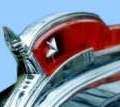
|
Quote:
...I don't think he was ever a Packard guy but Brooks Stevens was another designer that got a lot of bang for very few bucks... [2014/07/18] Howard, that could have been a Patrician Town Car by Brooks Stevens. Here to the related SIA profil Oct 1982: -> part #1 -> part #2
Posted on: 2016/6/5 3:44
|
|||
|
The story of ZIS-110, ZIS-115, ZIL-111 & Chaika GAZ-13 on www.guscha.de
|
||||
|
||||

 (17.55 KB)
(17.55 KB)
